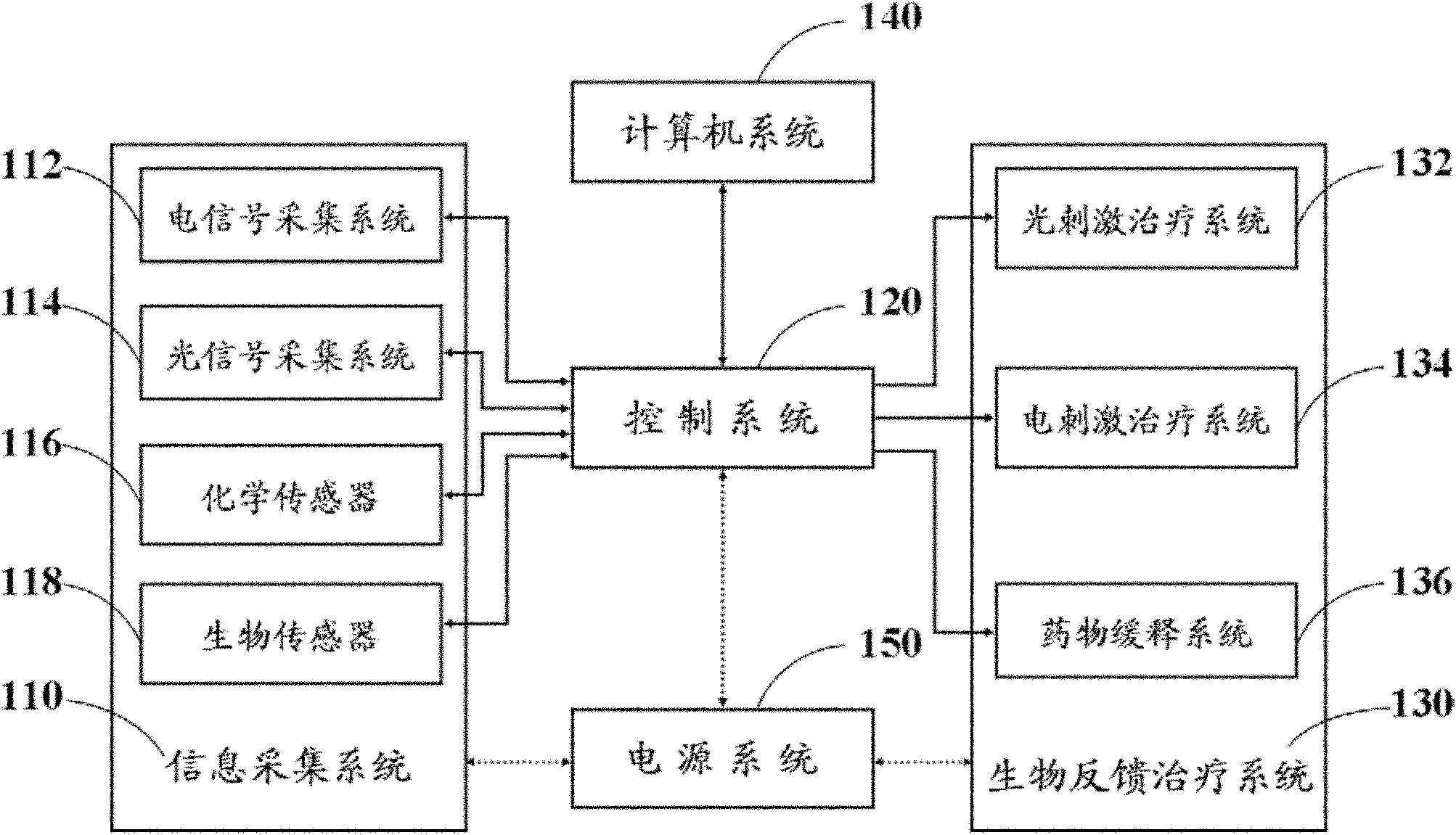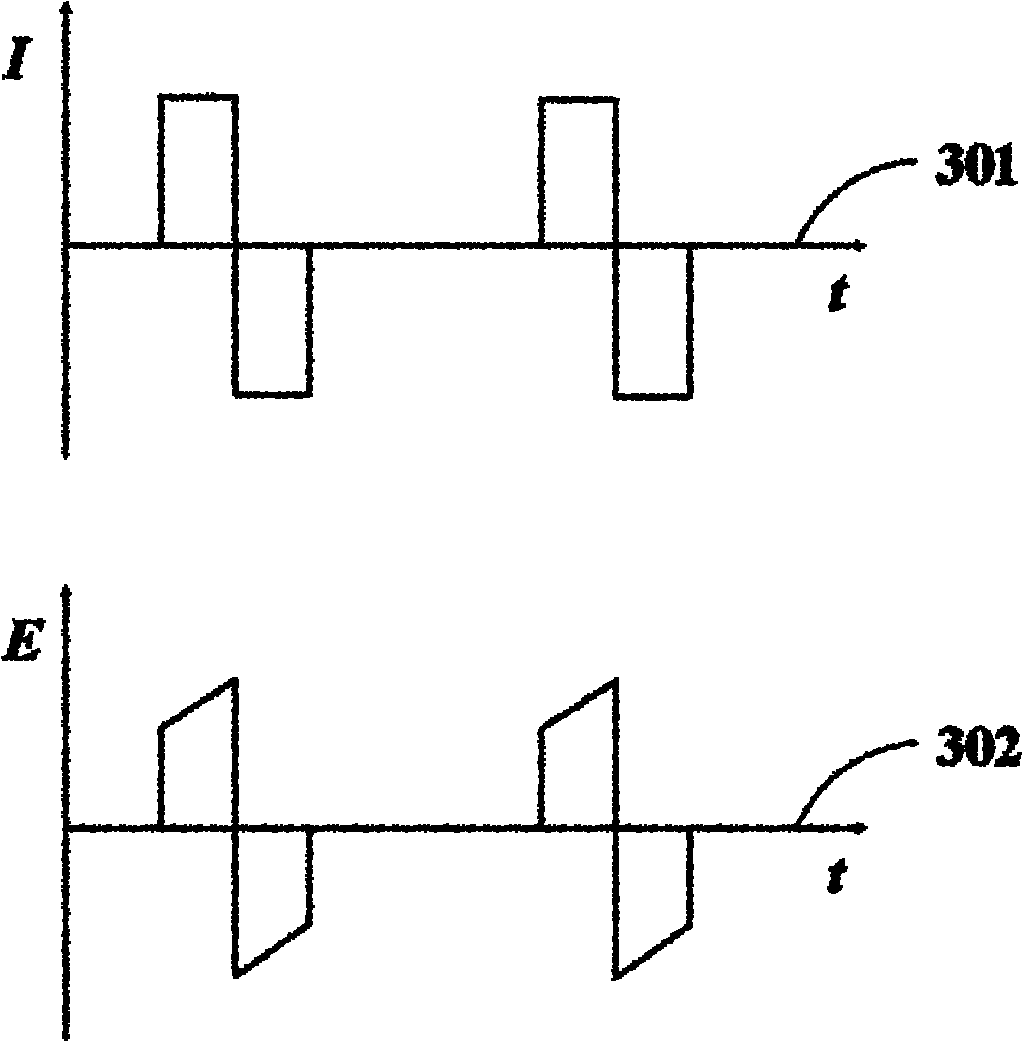Biofeedback photoelectric therapeutic device
A biofeedback and therapeutic device technology, applied in the field of medical devices, can solve problems affecting the survival of electrode nerve cells, increasing the distance between electrodes and target neurons, and limited time and space resolution of transcranial direct electrical stimulation.
- Summary
- Abstract
- Description
- Claims
- Application Information
AI Technical Summary
Problems solved by technology
Method used
Image
Examples
Embodiment 1
[0053] Such as image 3 As shown, the photoelectrode 200 of this embodiment includes 3 working electrodes and 1 reference electrode. The electrode core 210 of the working electrode (hereinafter referred to as the working electrode core 210 ) and the electrode core 220 of the reference electrode (hereinafter referred to as the reference electrode core 220 ) are metal microwires. The working electrode core 210 and the reference electrode core 220 are distributed around the surface of the optical fiber 230 , and the distance between the electrode cores (including the working electrode core 210 and the reference electrode core 220 ) and the optical fiber 230 is 0-1 mm. The insulating layer 240 wraps the working electrode core 210 , the reference electrode core 220 and the optical fiber 230 to form a columnar photoelectrode 200 .
[0054] In this embodiment, the material of the working electrode core 210 is iridium oxide, and the material of the reference electrode core 220 is sil...
Embodiment 2
[0056] Such as Figure 4 As shown, the photoelectrode 300 of this embodiment includes an optical fiber 310 and an annular electrode core 320 distributed around the surface of the optical fiber 310 . The ring width of the ring electrode core 320 is less than 200 μm. The ring electrode core 320 is a metal micropipe or a metal, metal compound, carbon material or conductive polymer deposited around the optical fiber 310 . Among them, the deposition process can be realized by chemical deposition, chemical vapor deposition, ion sputtering, magnetron sputtering or high temperature evaporation. The outer layer of the ring-shaped electrode core 320 is encapsulated by an insulating layer 330, and one end of the ring-shaped electrode core 320 is exposed to form a ring-shaped electrode. The ring-shaped electrode core 320 is in direct contact with the optical fiber 310, so that EEG recording or photoelectric stimulation therapy can be performed more accurately. In addition, the ring ele...
Embodiment 3
[0059] Such as Image 6 As shown, the size of the photoelectrode 400 in this embodiment is smaller, and its structure is roughly the same as that of the photoelectrode 300 in the second embodiment. The photoelectrode 400 is located inside the catheter 500 , and the photoelectrode 400 is connected to the catheter 500 through a connecting device 510 at one end. Similar to Embodiment 2, the catheter 500 of this embodiment can also be used as a reference electrode. Since the photoelectrode 400 is small, it can be used as a monopolar photoelectrode implanted in a deep part, which can reduce surgical trauma and enhance the selectivity of the electrode.
PUM
 Login to View More
Login to View More Abstract
Description
Claims
Application Information
 Login to View More
Login to View More - R&D
- Intellectual Property
- Life Sciences
- Materials
- Tech Scout
- Unparalleled Data Quality
- Higher Quality Content
- 60% Fewer Hallucinations
Browse by: Latest US Patents, China's latest patents, Technical Efficacy Thesaurus, Application Domain, Technology Topic, Popular Technical Reports.
© 2025 PatSnap. All rights reserved.Legal|Privacy policy|Modern Slavery Act Transparency Statement|Sitemap|About US| Contact US: help@patsnap.com



